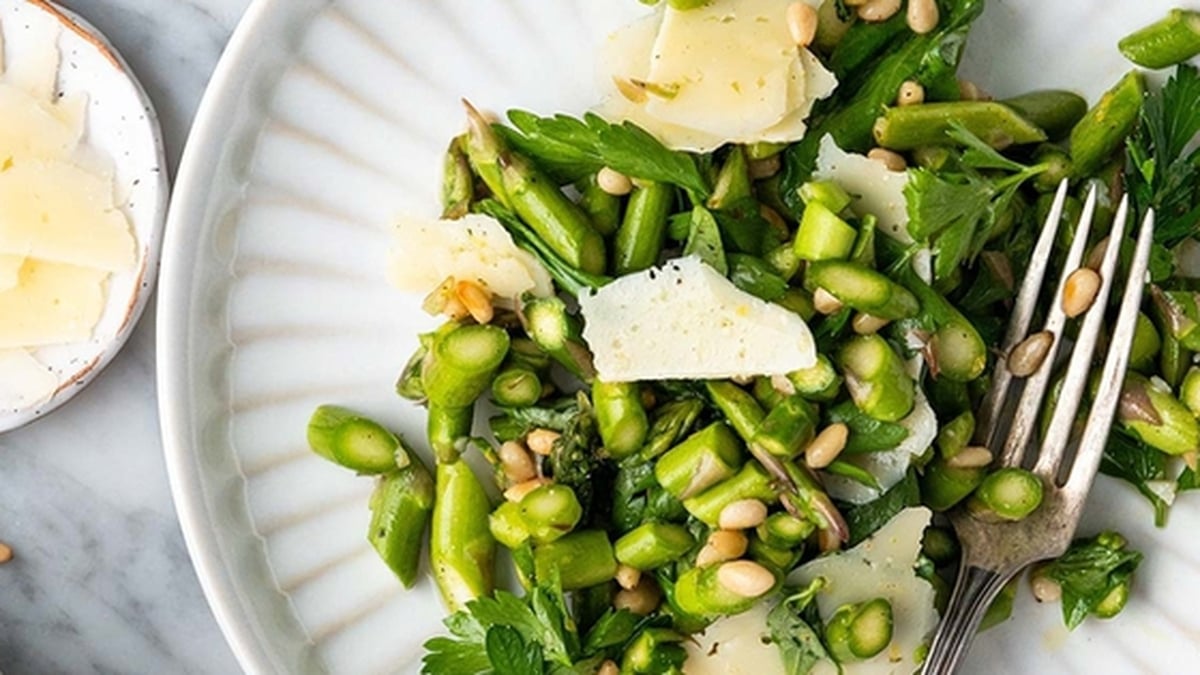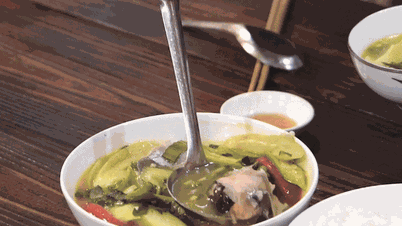.jpg)
With its refreshing taste and characteristic soft, chewy texture, jelly has long been a favorite refreshment in many families.
My family has small children and lives in a rural area, so we always prioritize jellies made from leaves and plants harvested entirely in nature.
We climbed the steep hill west of the village to pick a handful of heart-shaped green leaves. They were jelly grass, a family of easy-to-grow climbing plants that grow abundantly in the sandy red soil at the edge of the forest.
After picking, the grass jelly leaves are washed and kneaded thoroughly. This mixture is filtered through a cheesecloth to remove foam and leaf residue. After just a few hours of waiting at room temperature, the grass jelly water will naturally solidify into soft, transparent moss green jelly pieces. The faint herbal scent wafts throughout the house.
To make the jelly more flavorful, you can sprinkle some rock sugar water, a little coconut milk, a few teaspoons of basil seeds or chia seeds. The sweet taste, mild aroma and cool feeling help the person enjoying it to ease the sweltering heat of summer days.
The hot sun was as delicious as eating jelly and as easy as eating jelly. The jelly melted before I could chew it. The jelly slid away, but the cool taste lingered on the tip of my tongue and the roof of my mouth. My whole body suddenly felt refreshed and relaxed, more pleasant.
Recently, I added ripe fig jelly to my family's list of cooling dishes. The preparation steps are as simple as those for grass jelly. After peeling and removing the seeds, the ripe red figs are soaked in diluted salt water. Then, they are put in a clean towel, tied tightly, soaked in a basin containing a moderate amount of water and squeezed smoothly. The water secreted from the figs will be left for a few hours to solidify into jelly.
Fig jelly has a slightly sour taste, a pure aroma, and dissolves and separates more easily than most other types of jelly. Fig jelly is suitable to be eaten with rock sugar water and shaved ice. This dish absolutely only appears in the summer, because this is the season when ripe figs are available.
Summer is the season of jelly, that's right. Because of the simple recipe and easy-to-find ingredients, a series of dishes named jelly have been born, from agar jelly, grass jelly, coconut jelly, aloe vera jelly, grass jelly, fruit jelly, etc.
And no matter what kind of jelly it is, to achieve the perfect balance of taste, the maker often cannot lack familiar "accessories": rock sugar water, coconut milk, basil seeds, lemon juice or honey.
The sweet taste mixed with a little sourness will highlight the softness and crunchiness of each piece of jelly, creating a cool combination like a "treasure" that soothes the mood and knows how to comfort. From being harsh and "uncomfortable", the body suddenly becomes gentle.
Source: https://baoquangnam.vn/thanh-mat-cung-thach-3156196.html




































































































Comment (0)